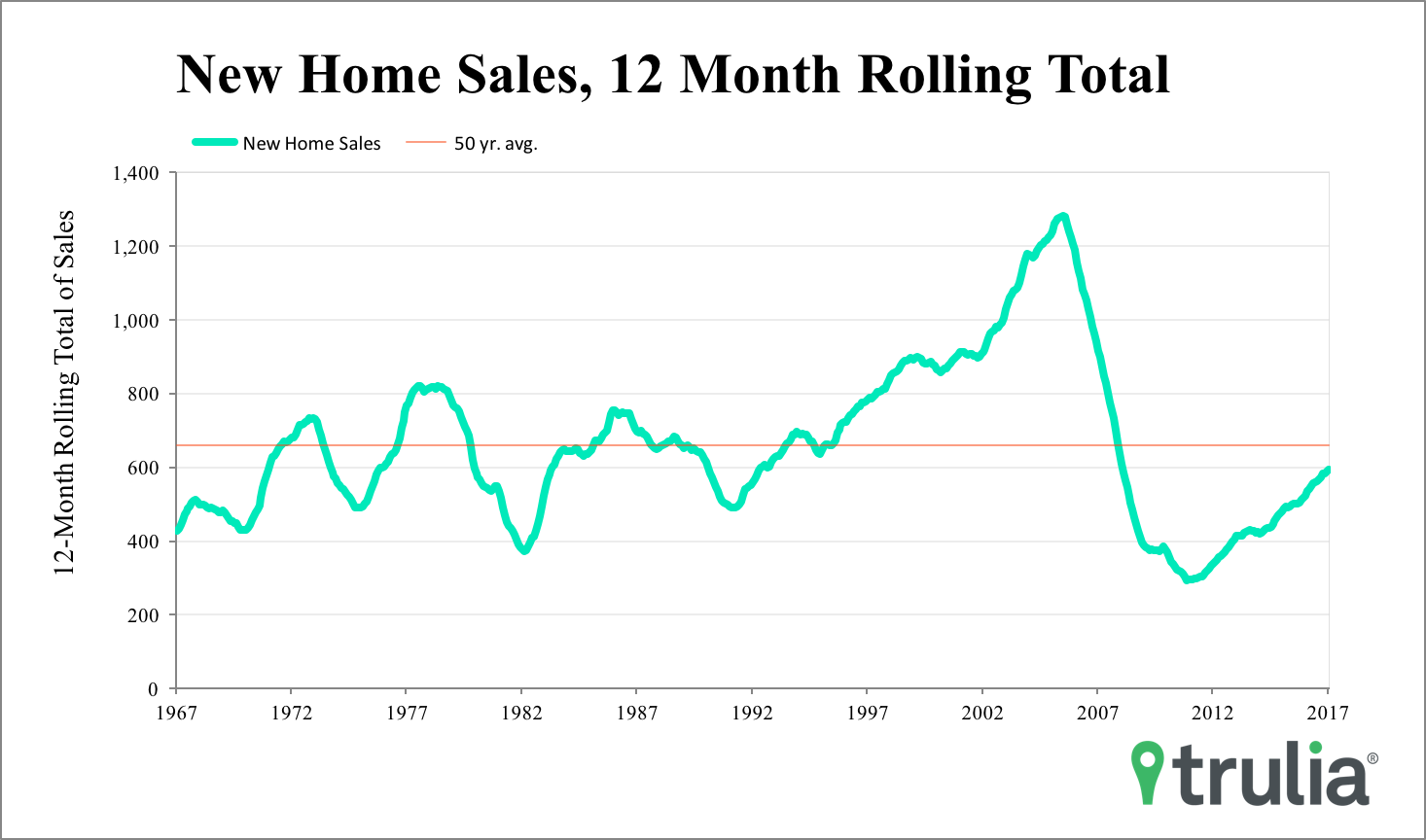- New home sales increased for the second straight month, showing that consumer demand for new homes remains strong in light of near historic lows in existing home inventory. That said, the increase was small and mostly due to May’s downward revisions.
- Though homebuyers continue to snap up new homes, there is much room for growth. When taking into account the size of the U.S., new home sales are still about 30% below the 50-year average. But the signs for home builders are clear: if you build, they will come.
- New construction and new home sales are critical in helping break the inventory gridlock. Our new work shows that of all the major explanations for why existing inventory is low, home building matters most.
New home sales in June increased to a seasonally adjusted rate of 610,000, which is up 0.8% month-over-month and 9.1% year-over-year. It’s important to note that the month-over-month figure is only up because May’s numbers were downwardly revised. That said, both of June’s numbers aren’t statistically significant (margin of error of 12.1% and 14.4%), so we should take them with a grain of salt. A less volatile number to look at is the 12-month rolling total, which is up 14.1% year-over-year. This represents the most since June 2008 – a nine year high. The increase over last year puts the 12-month total at 89.9% of the 50-year average.

However, the 12-month rolling total of new home sales compared to the 50-year average looks like there’s still more room to grow when taking into account the size of the U.S. population. New home sales per 1,000 U.S. households ticked up to five in June, which is only 69.9% back to normal.

The research team at Trulia also released a new report this morning showing just how important new homes are to the housing market. We tested five major theories for why existing inventory is so low across the largest 100 markets, and found that new home building by far has the largest impact on inventory. For every percentage-point increase in home building between 2010 and 2016, a market could expect its inventory to increase by a whopping 13%. How is this? It’s what we call the multiplier effect, whereby one new home allows and existing homeowner to trade up, which allows another existing homeowner to trade up, and so on. To see more findings from our report, you can find it here.

